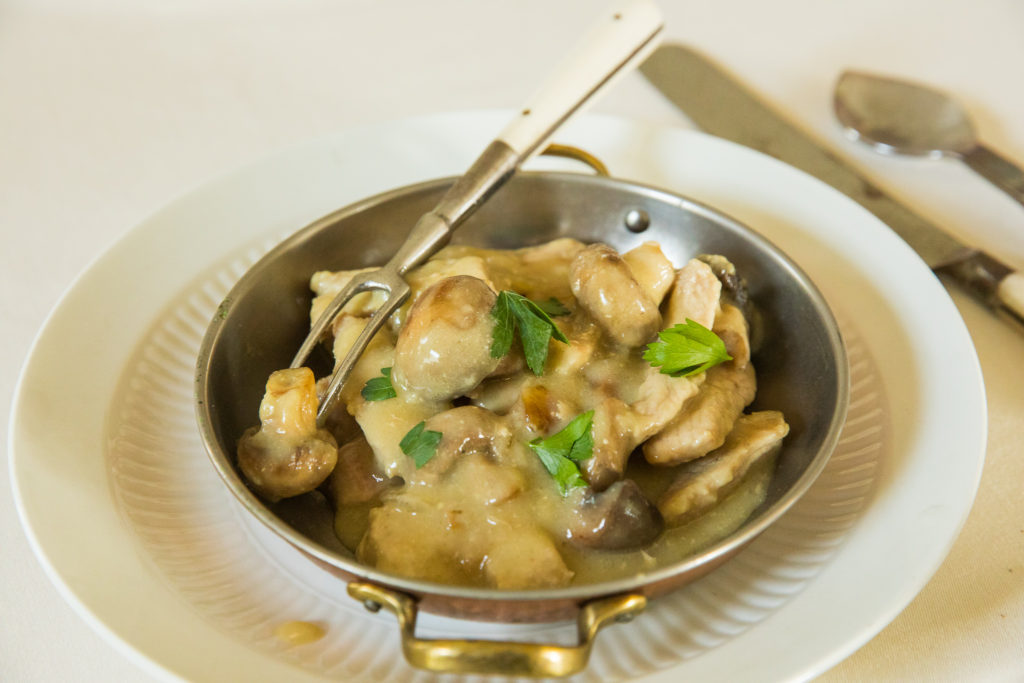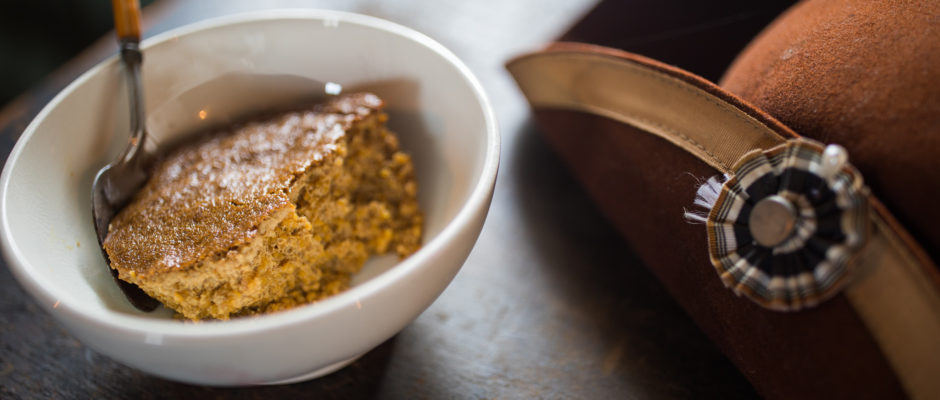Early in U.S. history, western Pennsylvania was the nation’s frontier. When colonial explorers, intrepid settlers and traders set out to conquer the American wilderness, they first had to make their way through the state’s wild and challenging Allegheny Mountains.

The route taken by these early travelers began as an Indian path and eventually evolved into a highway, one that still exists today: The National Road. The first federally funded U.S. highway, the iconic thoroughfare winds its way through southwestern Pennsylvania and crosses six states.
To celebrate the Road’s 200th Anniversary, the National Road Heritage Corridor (NRHC), which preserves and promotes the Road’s role in U.S. history and commerce, published “Grub to Gourmet: the History of Food on The National Road.“
“A role of the heritage area is to keep the story of the Road alive,” says Donna Holdorf, executive director of NRHC. “We determined that a cookbook spanning the origin of the Road, its heyday, the auto-touring era and modern day, would do just that.”
NHRC commissioned Joe Carei, a well-known local restaurateur who has been preparing meals for NRHC events for the last 12 years, to curate authentic recipes inspired by the dishes, desserts and libations enjoyed by those traveling the National Road from the Whiskey Rebellion in the 1700s until today. Ben Moyer, a local historian, nature writer and regular contributor to Pittsburgh Quarterly, was tasked with relaying the Road’s history.
I made and sampled every recipe, only slightly tweaking some of the older ones for more modern palates. The goal was always to be as authentic as possible.Chef Joe Carei
To that end, Grub to Gourmet provides more than just recipes. The book illuminates 250 years of American history through food — the hardship, innovation and pleasures of the Native Americans who originally lived in the area; the lives of the early American soldiers, rebels, and pioneers seeking new lives and livelihoods in the widening frontier; and, ultimately, the delights enjoyed by pleasure travelers along the National Road. From the details of beermaking — carried by George Washington in the French and Indian War — to Henry Ford’s favorite Deviled Crab, Carei includes recipes from the area’s four most vibrant and historically significant eras.
The recipes were meticulously researched.
“I started with textbooks, journals, and old menus from taverns along the Road,” explains Carei. “We stayed with the fare served along the Road or prepared by travelers themselves. I interviewed proprietors along the Road today for the more modern recipes. Then I made and sampled every recipe, only slightly tweaking some of the older ones for more modern palates. The goal was always to be as authentic as possible. “
Moyer’s job was to provide context for those recipes.

“I grew up in the area and currently live right off the National Road, so this is home for me,” he says. “I have always been interested in the National Road, which lies where it does due to the unique geography of the land. If you wanted to go from Cumberland and head west to the Ohio River before the U.S. highway system was built, this corridor is really the only passable route through the Allegheny Mountains.”
The course followed by today’s Route 40 is roughly the same path used by Native Americans, referred to as “Nemacolin’s Path” after Delaware Indian Chief Nemacolin.
Writing the book led to some interesting discoveries.
 “I was surprised at the importance of drinking alcohol in the early days of the Road,” says Moyer. “It was often safer to drink [alcohol] than the available water at taverns.”
“I was surprised at the importance of drinking alcohol in the early days of the Road,” says Moyer. “It was often safer to drink [alcohol] than the available water at taverns.”
Whiskey, which could be made without the cane sugar needed to make rum, was a favorite of patrons and often used in place of more traditional currency. Modern distilleries — such as Liberty Pole Spirits, Ridge Runner Distillery, and Red Pump Spirits — now operate near the site of 1794’s Whiskey Rebellion, which is celebrated each July at the Whiskey Rebellion Festival.
As stage coaches and Conestoga wagons began regularly traveling the Road, watering holes proliferated – as many as one per mile in some sections. Charismatic tavern owners sought to make a name for themselves, developing new cocktails. A popular concoction known as the “Rattle-Skull” was a precursor to today’s Boilermaker. Later, during the auto-touring era, more refined cocktails were created — such as the Bee’s Knees and the Sidecar — for those who traveled for commerce, pleasure, and entertainment. Recipes for both colonial and modern cocktails are interspersed throughout the book.
Carei and Moyer worked independently, and then merged their research seamlessly in the final product.
“The book tells the history of the region and demonstrates the amazing agricultural bounty of western Pennsylvania,” says Moyer. “But it also presents history in a uniquely relatable fashion by way of illustrating what the people ate and drank.”

“There is really no such thing as a ‘new’ recipe,” explains Carei. “There are variations. This book shows the evolution of a lot of traditional American recipes – like the evolution of hoe cakes (one of Washington’s favorites) to hot cakes to flap jacks to johnny cakes to pancakes. Servings which were once large and dense to serve those who were engaged in the hard work of traversing the terrain became more refined as travel became easier.”
Some recipes have remained the same for over 200 years, such as the peanut soup — once a great luxury due to the rarity of peanuts — still served at The Century Inn in Scenery Hill, the Road’s oldest continually operating restaurant.
Currently in the running for a James Beard award, Grub to Gourmet is available at the NRHC website, Fallingwater, Liberty Pole Distillery and Christian Klay Winery, as well as pop-up kiosks in the Uniontown Mall.
“It’s more than a cookbook and it’s more than a history book,” says Carei. “It’s actually two really terrific books for the price of one.”
This story was created in partnership with the National Road Heritage Corridor, celebrating 200 years of the Historic National Road, the country’s first federally funded highway. For more information, visit nationalroadpa.org/



